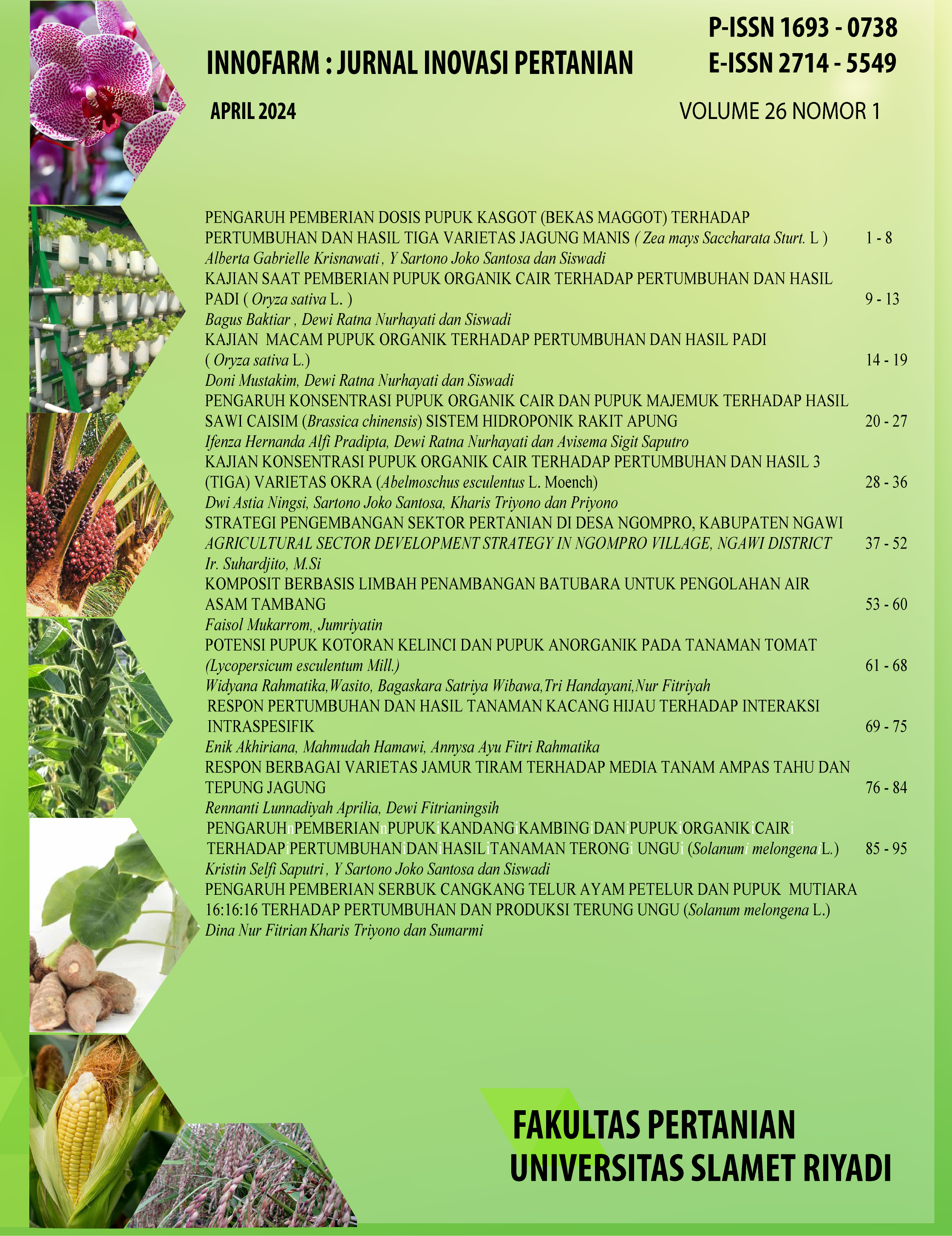COMPOSITES BASED ON COAL MINING WASTE FOR ACID MINE WATER TREATMENT
claystone, mine waste water, iron, copper, manganese
DOI:
https://doi.org/10.33061/innofarm.v26i1.10208Abstract
Stripping coal overburden that contains sulfides and is in contact with air causes the formation of acid mine drainage (AAT). Acid mine water that has a pH < 4 will react and dissolve metals in its path, resulting in the formation of dangerous toxic materials which are very detrimental to the environment and human health. One AAT treatment method that is easy to implement with low operational costs is passive treatment using the adsorption method. Adsorption is an effective method for overcoming the problem of acid mine drainage because of its economy and the abundant availability of adsorbents in nature. This research aims to determine the effectiveness and adsorption capacity of a composite consisting of mudstone derived from coal cover layer material, zeolite and coconut shell charcoal as an absorber of Fe and Mn in acid mine drainage. In this research, Tanjung Enim clay, South Sumatra was calcined at a temperature of 600-700 ºC and characterized using X-Ray Diffraction (XRD) and Surface Area Analyzer (SAA). This research uses experimental methods in the laboratory. The types of mudstone minerals are kaolinite, zeolite: mordenite, and coconut shell charcoal: cristobalite. The composite was made with 3 ratios (Claystone[C] : Quartz Sand (P): Charcoal[A]) = 20:40 : 40, 25:25:50, and 10:20:70. The best composite adsorption level for Fe and Mn at C::P:A= 10:20:70
Downloads
Published
Issue
Section
License
Copyright (c) 2024 faisol Mukarrom, Jumriyatin Jumriyatin

This work is licensed under a Creative Commons Attribution-NonCommercial 4.0 International License.
Authors who publish this journal agree to the following terms:
- Authors retain copyright and grant the journal right of first publication with the work simultaneously licensed under a Creative Commons Attribution License that allows others to share the work with an acknowledgement of the work's authorship and initial publication in this journal.
- Authors can separately make additional contractual arrangements for non-exclusive distribution published by the journal (e.g., publish it in a book), with an acknowledgement of its initial publication in this journal.
- Authors are allowed and encouraged to send their work via online (e.g., in the institutional repositories or their website) after published by the journal.


















